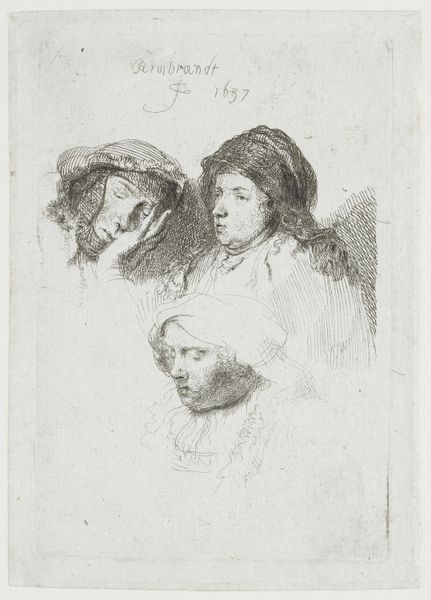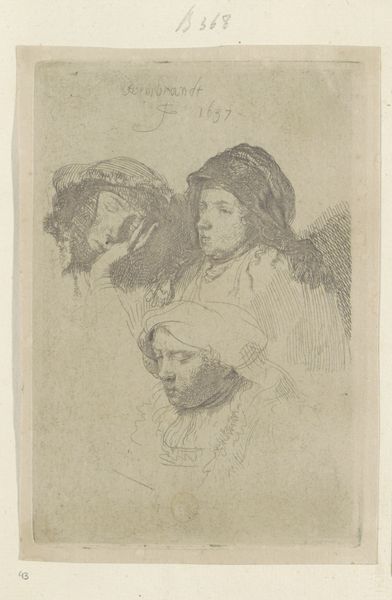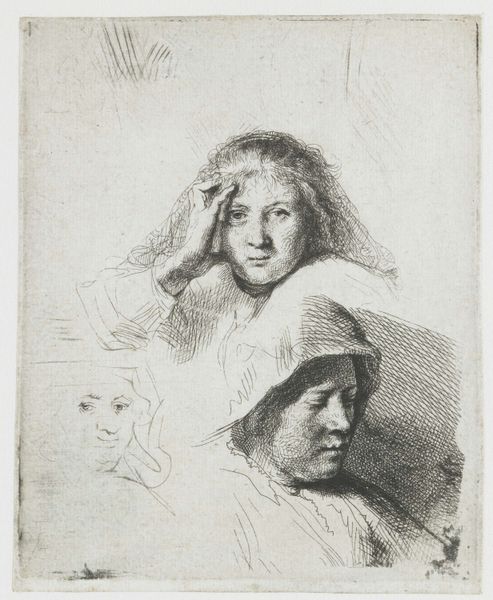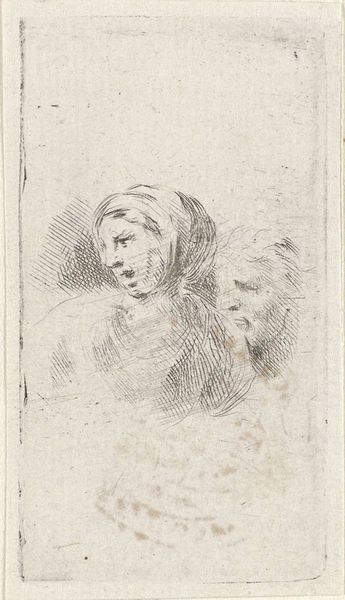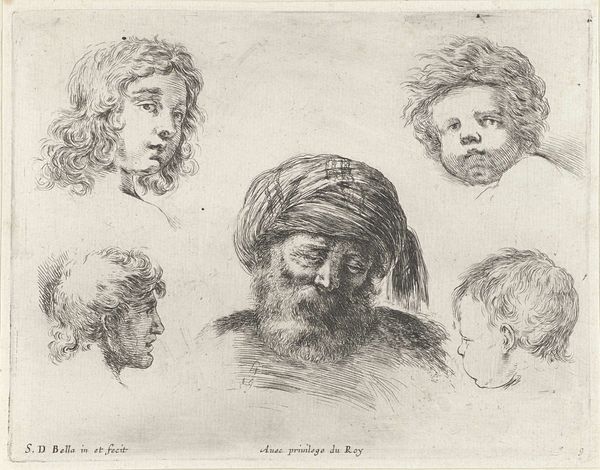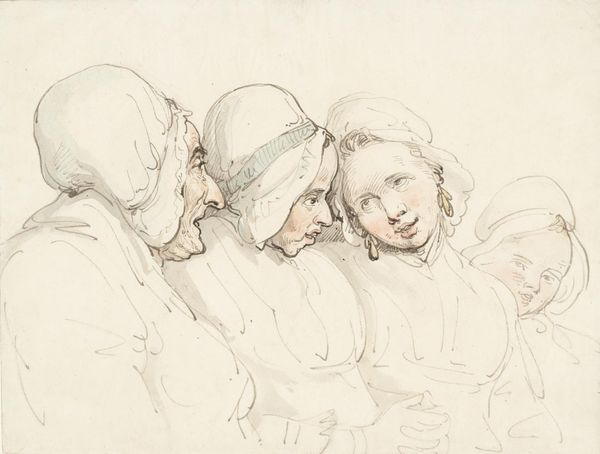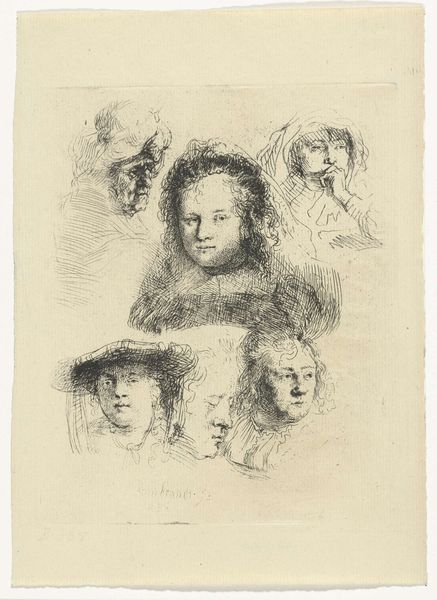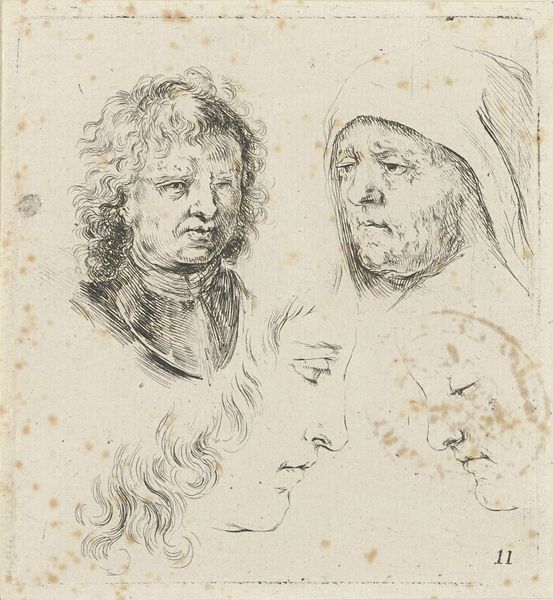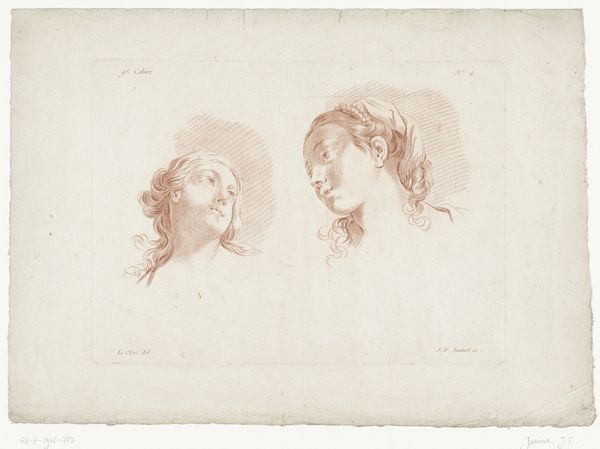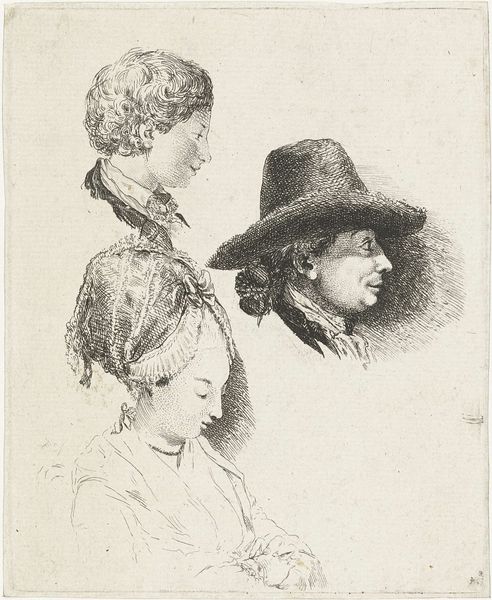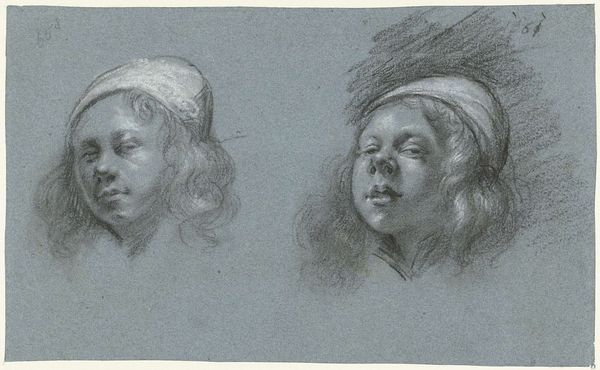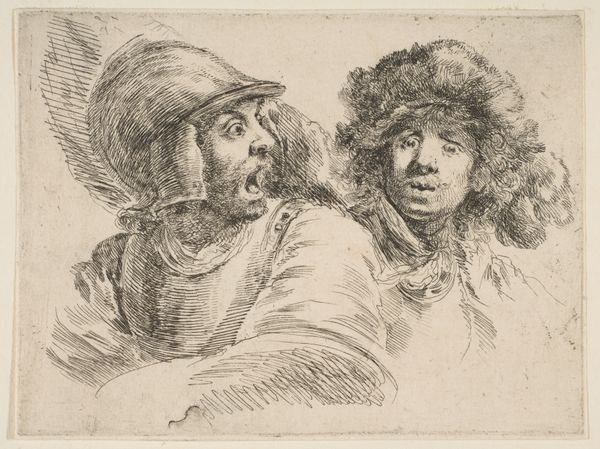
drawing, print, etching
#
portrait
#
drawing
#
baroque
#
dutch-golden-age
# print
#
etching
#
figuration
Dimensions: height 141 mm, width 97 mm
Copyright: Rijks Museum: Open Domain
Curator: Right, let’s have a look at this etching by Rembrandt van Rijn, titled "Three Heads of Women, One Asleep" from 1637, here at the Rijksmuseum. My first thought is weariness; look at the heavy lids and slack muscles, it feels like capturing the fleeting nature of thought before sleep. Editor: What a beautiful little symphony of slumber. There's a quiet, contemplative energy here, almost melancholic. Rembrandt really captures a universal state. But, tell me, is it just studies for later work or something more? Curator: Good question. Prints like these, particularly etchings, often served multiple purposes. On one level, they were explorations of human expression, allowing Rembrandt to study and refine his depiction of emotions. The woman sleeping could very well symbolize oblivion or a meditative retreat from the world. But they were also commodities, sold to collectors and art students. The variety of expression here gave them wider appeal. Consider the caps each woman wears. Do you feel a symbolism there, and a contrast to the central figure's alertness? Editor: Definitely. Each headpiece seems like a character in itself! The sleeping woman’s hat is chaotic, a mess of impressions. The lower woman's headscarf droops with surrender. I wonder if Rembrandt meant us to read societal or emotional states through these headpieces as symbols. And is that furrow in the brow just a precursor to complete release? Or are they haunted by their daily life? This composition captures this tension so wonderfully. It makes one wonder if the "sleep" is genuine respite or simply exhaustion? What are the typical symbolical conventions one might relate to Baroque representations of women at the time? Curator: Absolutely. It is thought that sleep represents a kind of surrender to the passions in baroque portraiture. More broadly in iconography, in Rembrandt's time, sleep often was associated with death, so that would mean something to a contemporary audience familiar with these symbolisms. Consider Susanna van Steenweely as model. The interplay between vulnerability, and the active search for sleep is indeed something very captivating here, don't you think? Editor: It really is. Looking at it again with all of these connections in mind, it makes it even more striking. You start to sense there are all these subconscious themes going on just beneath the surface. So, this quick little piece turns out to be deeply layered in cultural context. Thanks for highlighting all that. Curator: My pleasure! These prints are more than just studies, I feel. They are windows into a rich landscape of thoughts, where everyday moments meet profound artistic expression and social conventions.
Comments
rijksmuseum about 2 years ago
⋮
In 1634 Rembrandt married Saskia Uylenburgh, the daughter of a mayor of Leeuwarden. Almost all of the heads in these studies are of her. Rembrandt evidently thoroughly enjoyed portraying his new bride in ever-different poses. The fluid lines suggest that he drew directly on the etching ground, at times without his models being aware of it.
Join the conversation
Join millions of artists and users on Artera today and experience the ultimate creative platform.
